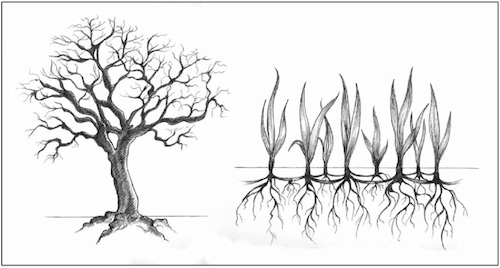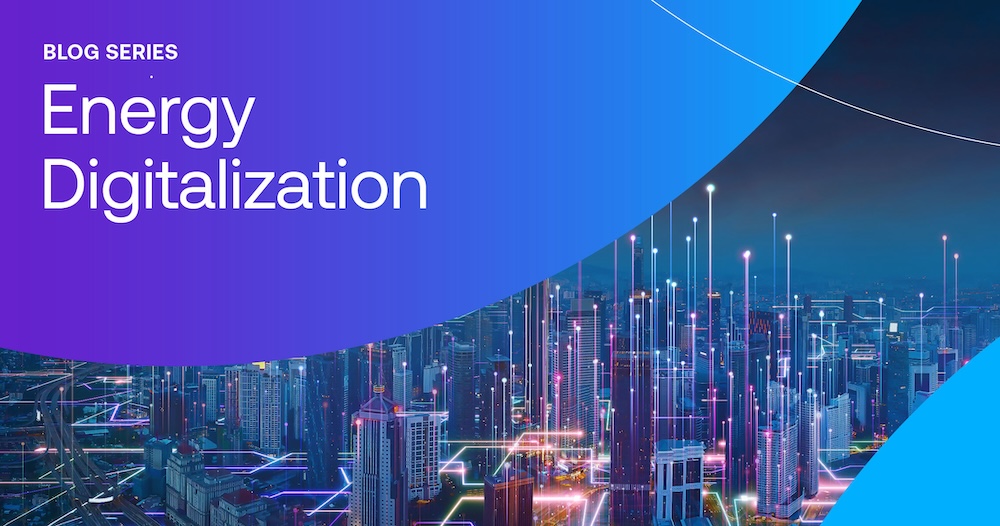This installment of our energy digitalization series explores an alternative to closed, vendor-segregated digital energy solutions, through an open, distributed data and device architecture.
There is a major problem in the energy industry and no one wants to talk about it.
It was there when I visited a hydroelectric control room that had a dissolved oxygen dashboard without notification alerts. I heard about it at a thermal plant where managers were exchanging excel files to compare performance. I read about it in a wind cybersecurity report detailing how the Open Platform Communications (OPC) spec recommends that vendors put assets in a “read-only” mode.
If you haven’t guessed it, the problem I am talking about is managing siloed multi-vendor systems. The OEM-led digital transformation of the energy industry has left companies with a maze of single use dashboards, disjointed processes, and haphazard workarounds.
This state of affairs is difficult when managing a single site and impossible at scale. Not only are existing operations impeded, the latest advances in energy orchestration, climate impact modeling, and AI are also left tantalizingly out of reach.
We designed the Intertrust Virtual Operations Center (VOX) to realize that original vision of an interconnected energy ecosystem. VOX is not just an incremental change, it represents a paradigm shift from closed, vendor-segregated stacks to an open, distributed data/device architecture.
To understand the difference in approach, imagine a forest teeming with trees and large ferns. The trees, isolated and independent, are akin to siloed systems each drawing from its own resources. Data can often only flow within one system and in one direction.

Now picture the ferns, sprawling and interweaving with one another, their fronds and root systems overlapping and connecting in a vast network. This is the vision embodied by VOX. Alerts, commands, and data can move in a governed fashion across multiple systems in any direction.
Where energy digitalization has come to mean stilting your operations upon any number of proprietary software stacks, VOX has been built from the ground up to unleash the potential of an integrated energy landscape. Here are just a few of the essential value adds for energy companies:
Agile data operations: VOX brings unified, governed access control across disparate data sources, making it simpler and more efficient for data consumers to find and use the information they need. This approach ensures that analysts can leverage data more effectively, fostering better insights and real-time business decisions.
Persistent data protection: VOX uses Intertrust’s Explicit Private Networking (XPN) to authenticate and authorize IoT devices, commands, and applications, guaranteeing your operational data is persistently protected across untrusted networks. With XPN, VOX provides end-to-end security and enhanced trust in your data and devices.
Single point of truth reporting: All data, actions, and access rights are captured and auditable to ensure consistency and ease in generating performance and compliance reporting, greatly streamlining operations.
IT/OT convergence: Comprehensive integration of IT and OT data coupled with authorized commands provides energy companies a single pane of glass to monitor and control their operations, leading to better decisions, improved efficiency, and reduced costs.
AI enablement: By unifying siloed environments into seamless data flows, VOX sets the stage for AI-driven initiatives, including predictive maintenance, production forecasting, demand response, and virtual power plants.
With these advances, VOX opens the next chapter in the digital transformation of the energy sector. An open device/data architecture allows us to start thinking of distributed energy resources as distributed energy ecosystems. Over the next few months, my colleagues and I will be exploring what such a future could look like from just-in-time scheduled maintenance to the simultaneous balancing of consumer loads, transmission constraints, and generation assets through energy orchestration.
There’s no denying that the digital transformation of energy is vital for a future of smarter, cleaner electricity production. It’s high time that our energy systems reflected the brighter future that they aim to create.
If any of the points I’ve highlighted resonated with your own experience, don’t hesitate to reach out to me. I am always interested in learning more about the challenges of siloed multi-vendor systems and what digital tools or solutions any of you have encountered.
About Zaki Alattar
Zaki Alattar is the Director of Product Management at Intertrust Technologies. Prior to Intertrust, Zaki worked as a Solar Engineer at Plankton Energy and was a Charif Souki Global Energy Fellow. He holds a BS in Business Administration from UC Berkeley Haas School of Business and an MS in Environmental Engineering at Columbia University.

